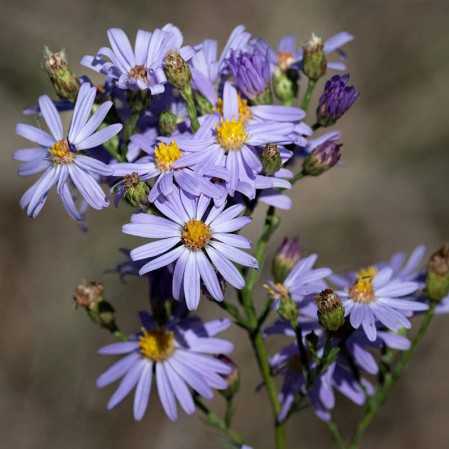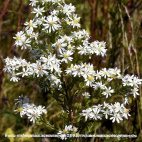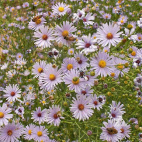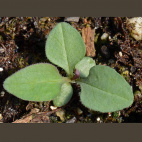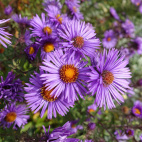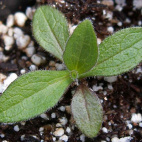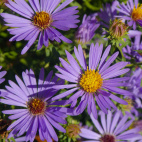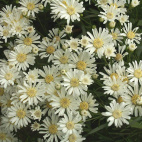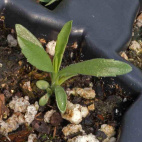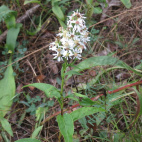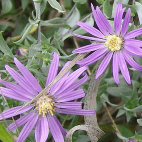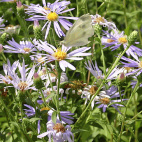Sky Blue Aster Seeds
- HOW TO GROW
- FAST FACTS
- REVIEWS
HOW TO GROW
Sowing: In late fall, direct sow the seed 1/4" deep in dry to medium soil and full sun. This Sky Blue Aster plant also adapts well to moist, sandy, or clay soil. For spring planting, stratify the seed by mixing it with moist sand and storing it in a plastic bag in the refrigerator for 4-6 weeks before direct sowing. To start the plants indoors, stratify the seeds, then sow two or three seeds each in small peat pots 1/4" deep. Keep the soil lightly moist and at a temperature of 70-75 degrees F until germination, which should take place within 10-14 days. Thin to the strongest seedling, and transplant 15-18" apart after the last spring frost.
Growing: Because this Sky Blue Aster plant adapts well to either drought or moisture, watering is optional. It grows rather slowly, and may not produce flowers until its second year of growth. Mature plants may be divided. This plant will self seed unless the wilted flowers are removed. Bees and butterflies are attracted to these flowers.
Harvesting: For fresh flowers, cut the stems of blossoms that are about half open; change the water often for a vase life of 7-10 days. For dried flowers, bundle the stems and hang them upside down in a dark, warm place until dry.
Seed Saving: After the first hard frost or when the flowers stop blooming, the seed heads will begin to form. Since small birds love to eat the seed, harvest the fluffy seed material promptly to avoid loss. Cut the entire top of the plant, or shake it into a container to collect the seed. Clean Sky Blue Aster flower seeds as well as possible, and store it in a cool, dry place.
FAST FACTS
Common Names: Azure Aster
Latin Name: Aster azureus
Species Origin: US Native Wildflower
Type: Native Wildflowers
Life Cycle: Perennial
USDA Zones: 3, 4, 5, 6, 7, 8, 9
US Regions: Midwest, Northern, Northeast, Southeast
Seeds per Ounce: 80,000
Stratification: No Stratification
Germination Ease: No Stratification
Sunlight: Full Sun, Part Sun
Height: 36 Inches
Color: Blue
Bloom Season: Blooms Early Fall, Blooms Late Fall
Uses: Attracts Pollinators, Attracts Honeybees, Attracts Butterflies, Cut Flowers
Nothing sprouted
I followed the directions for direct seeding outside, and I tried them inside with the paper towel method. Nothing happened.
Hello, nothing will happen if these seeds were planted outside before they go through the winter cycle. If you are planting in the spring, they need to go through the stratification process first. We will be happy to send you another packet for you to try again.
DESCRIPTION

HOW TO GROW
Sowing: In late fall, direct sow the seed 1/4" deep in dry to medium soil and full sun. This Sky Blue Aster plant also adapts well to moist, sandy, or clay soil. For spring planting, stratify the seed by mixing it with moist sand and storing it in a plastic bag in the refrigerator for 4-6 weeks before direct sowing. To start the plants indoors, stratify the seeds, then sow two or three seeds each in small peat pots 1/4" deep. Keep the soil lightly moist and at a temperature of 70-75 degrees F until germination, which should take place within 10-14 days. Thin to the strongest seedling, and transplant 15-18" apart after the last spring frost.
Growing: Because this Sky Blue Aster plant adapts well to either drought or moisture, watering is optional. It grows rather slowly, and may not produce flowers until its second year of growth. Mature plants may be divided. This plant will self seed unless the wilted flowers are removed. Bees and butterflies are attracted to these flowers.
Harvesting: For fresh flowers, cut the stems of blossoms that are about half open; change the water often for a vase life of 7-10 days. For dried flowers, bundle the stems and hang them upside down in a dark, warm place until dry.
Seed Saving: After the first hard frost or when the flowers stop blooming, the seed heads will begin to form. Since small birds love to eat the seed, harvest the fluffy seed material promptly to avoid loss. Cut the entire top of the plant, or shake it into a container to collect the seed. Clean Sky Blue Aster flower seeds as well as possible, and store it in a cool, dry place.
FAST FACTS
Common Names: Azure Aster
Latin Name: Aster azureus
Species Origin: US Native Wildflower
Type: Native Wildflowers
Life Cycle: Perennial
USDA Zones: 3, 4, 5, 6, 7, 8, 9
US Regions: Midwest, Northern, Northeast, Southeast
Seeds per Ounce: 80,000
Stratification: No Stratification
Germination Ease: No Stratification
Sunlight: Full Sun, Part Sun
Height: 36 Inches
Color: Blue
Bloom Season: Blooms Early Fall, Blooms Late Fall
Uses: Attracts Pollinators, Attracts Honeybees, Attracts Butterflies, Cut Flowers
Reviews
Review
Nothing sprouted
I followed the directions for direct seeding outside, and I tried them inside with the paper towel method. Nothing happened.
Hello, nothing will happen if these seeds were planted outside before they go through the winter cycle. If you are planting in the spring, they need to go through the stratification process first. We will be happy to send you another packet for you to try again.
Also Consider These:
-
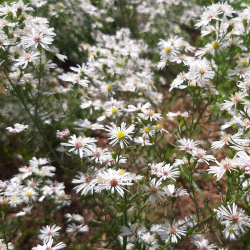 On Sale!
Heath Aster Seeds
Aster ericoides
Quick View
x
On Sale!
Heath Aster Seeds
Aster ericoides
Quick View
xHeath Aster Seeds
Starting at $3.75 USD -
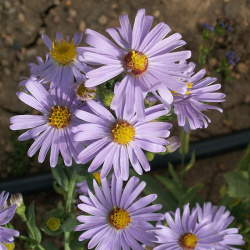 Smooth Blue Aster Seeds
Aster laevis
Quick View
x
Smooth Blue Aster Seeds
Aster laevis
Quick View
xSmooth Blue Aster Seeds
Starting at $3.75 USD -
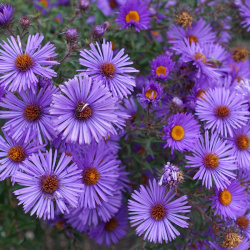 New England Aster Seeds
Aster novae-angliae
Quick View
x
New England Aster Seeds
Aster novae-angliae
Quick View
xNew England Aster Seeds
Starting at $3.48 USD -
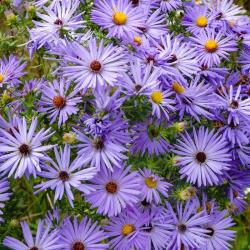 On Sale!
Aromatic Aster Seeds
Aster oblongifolius
Quick View
x
On Sale!
Aromatic Aster Seeds
Aster oblongifolius
Quick View
xAromatic Aster Seeds
Starting at $3.75 USD -
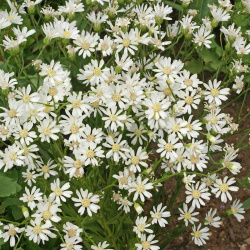 On Sale!
White Upland Aster Seeds
Aster ptarmicoides
Quick View
x
On Sale!
White Upland Aster Seeds
Aster ptarmicoides
Quick View
xWhite Upland Aster Seeds
Starting at $3.48 USD -
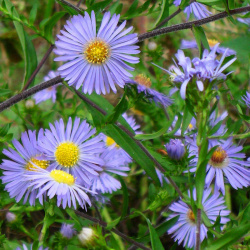 Swamp Aster Seeds
Aster puniceus
Quick View
x
Swamp Aster Seeds
Aster puniceus
Quick View
xSwamp Aster Seeds
Starting at $3.75 USD -
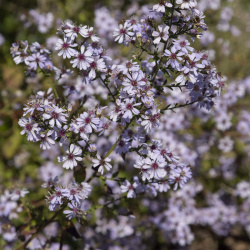 Arrow Leaved Aster Seeds
Aster sagittifolius
Quick View
x
Arrow Leaved Aster Seeds
Aster sagittifolius
Quick View
xArrow Leaved Aster Seeds
Starting at $3.75 USD -
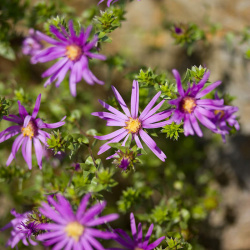 On Sale!
Silky Aster Seeds
Aster sericeus
Quick View
x
On Sale!
Silky Aster Seeds
Aster sericeus
Quick View
xSilky Aster Seeds
Starting at $3.96 USD -
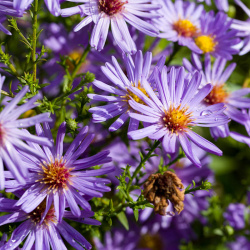 Out of Stock
Showy Aster Seeds
Aster spectabilis
Quick View
x
Out of Stock
Showy Aster Seeds
Aster spectabilis
Quick View
xShowy Aster Seeds
Starting at $3.48 USD
